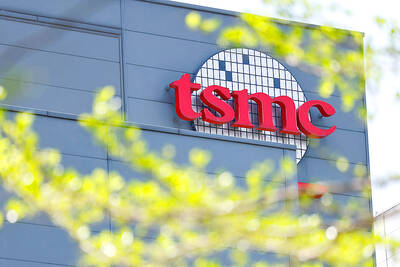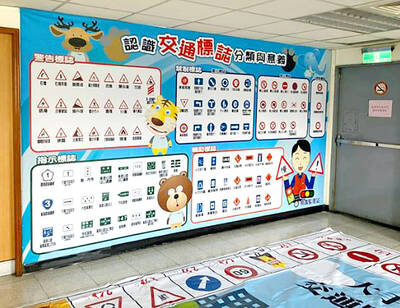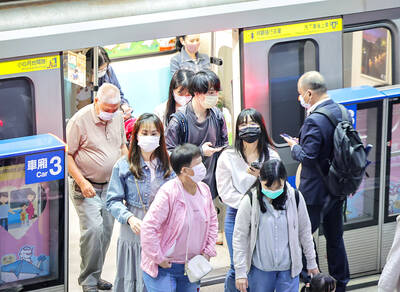Shanghai Municipal Committee United Front Work Department Director Sha Hailin (沙海林) yesterday said that exchanges between Taipei and Shanghai are conducted under the “one China” principle, which he said was supported by Taipei Mayor Ko Wen-je’s (柯文哲) respect for, and understanding of, the so-called “1992 consensus.”
Speaking at the Taipei-Shanghai Forum at the Regent Taipei hotel, Sha, who was supposed to give a 15-minute speech, talked for nearly half an hour, as he expounded on China’s hope of bringing together people on both sides of the Strait.
“I, with the delegation I lead, have come here to cement the friendship between the two cities, promote mutual understanding and deepen the emotional bond between residents of the two cities,” he said.
“[We have come] to write a [song] about brothers, that blood is thicker than water; to celebrate a familial bond across the Taiwan Strait; to cultivate a community of common good and destiny; and to realize the noble goal of reviving the Zhonghua minzu [中華民族, Chinese ethnic group],” he said.
Sha said that over the past eight years, cross-strait ties have benefited greatly from the bedrock of the “1992 consensus,” as shown in the frequent exchanges carried out between the two societies.
All these achievements were made because there had been a “correct” understanding of cross-strait relations and intercity exchanges, he said.
“However, due to a reason everybody knows, something we do not wish to see has transpired in cross-strait affairs,” he said.
“Nevertheless we will remain stalwart in our goal to continue to improve the emotional bond and welfare of people on both sides of the Taiwan Strait, come what may,” Sha said. “The people on both sides are one family that share one fate and one future.”
The “1992 consensus,” a term former Mainland Affairs Council chairman Su Chi (蘇起) admitted that he had made up in 2000, refers to a supposed understanding between the Chinese Nationalist Party (KMT) and the Chinese government that both sides of the Strait acknowledge there is “one China,” with each side having its own interpretation of what “China” means.
Speaking on the forum’s theme of “a vibrant city,” Sha said that there are five sources of Shanghai’s vibrancy: Trade reform and liberalization, a high-tech sector that focuses on innovation, continuous investment in education, a wide fiber-to-the-home network footprint, an expansive social welfare system that covers long-term healthcare and subsidies on social security premiums, affordable housing and a policy-driven job market.
Sha said about 550 Taiwanese are working in Shanghai’s high-tech sector, high schools and hospitals.
About 2,200 Taiwanese students enroll in Shanghai universities and high schools every year, he said, adding that funding from the Shanghai Municipal Government has helped about 30,000 Taiwanese start businesses there this year.
He said that Shanghai would continue to push policies that would strengthen the bonds and promote the welfare of people on both sides of the Strait.
In his speech, Taipei Mayor Ko Wen-je (柯文哲) reiterated the “2015 new perspective” that he touted at last year’s forum in Shanghai, which is based on “four reciprocal actions” — knowing, understanding, respecting and working with each other — during his concluding remarks, saying that these four actions are gestures of goodwill.
Taipei needs to take the initiative in these four actions and “reach out” if it wants people to collaborate with it, he said.
Taipei is the most liberal city in Taiwan, as Shanghai is in China; therefore, the two cities should learn to bear with each other’s differences, he said.
“Only when we learn to tolerate, thereby appreciate, different views can we build a liberal society and a civilized city,” he said. “While we understand and respect China’s insistence on ‘certain issues,’ we also hope that China will understand and respect Taiwan’s insistence on democratic and liberal values,” he said.
When asked to expound on the “basis” for exchanges between the two cities during a question-and-answer session, Sha told reporters that in addition to the “1992 consensus,” the Taipei City Government’s creation of a Mainland Affairs Division, which deals with issues between Taipei and Shanghai, shows that Taipei has the “right concept” in approaching intercity exchanges.
Asked to comment on Sha’s insistence on the “one China” principle, Ko said that he understands and respects what Sha must say given his position.
“He [Sha] would get in trouble if he said something wrong,” Ko said.
Ko evaded a question on whether Sha’s interpretation of the title of the Taipei’s Mainland Affairs Division meant that he had belittled the city.
Asked whether Sha really understood Taiwan’s democratic and liberal values, Ko said: “I think so, why else would he agree to come?”

EUROPEAN TARGETS: The planned Munich center would support TSMC’s European customers to design high-performance, energy-efficient chips, an executive said Taiwan Semiconductor Manufacturing Co (TSMC, 台積電), the world’s largest contract chipmaker, yesterday said that it plans to launch a new research-and-development (R&D) center in Munich, Germany, next quarter to assist customers with chip design. TSMC Europe president Paul de Bot made the announcement during a technology symposium in Amsterdam on Tuesday, the chipmaker said. The new Munich center would be the firm’s first chip designing center in Europe, it said. The chipmaker has set up a major R&D center at its base of operations in Hsinchu and plans to create a new one in the US to provide services for major US customers,

The Ministry of Transportation and Communications yesterday said that it would redesign the written portion of the driver’s license exam to make it more rigorous. “We hope that the exam can assess drivers’ understanding of traffic rules, particularly those who take the driver’s license test for the first time. In the past, drivers only needed to cram a book of test questions to pass the written exam,” Minister of Transportation and Communications Chen Shih-kai (陳世凱) told a news conference at the Taoyuan Motor Vehicle Office. “In the future, they would not be able to pass the test unless they study traffic regulations

GAINING STEAM: The scheme initially failed to gather much attention, with only 188 cards issued in its first year, but gained popularity amid the COVID-19 pandemic Applications for the Employment Gold Card have increased in the past few years, with the card having been issued to a total of 13,191 people from 101 countries since its introduction in 2018, the National Development Council (NDC) said yesterday. Those who have received the card have included celebrities, such as former NBA star Dwight Howard and Australian-South Korean cheerleader Dahye Lee, the NDC said. The four-in-one Employment Gold Card combines a work permit, resident visa, Alien Resident Certificate (ARC) and re-entry permit. It was first introduced in February 2018 through the Act Governing Recruitment and Employment of Foreign Professionals (外國專業人才延攬及雇用法),

‘COMING MENACINGLY’: The CDC advised wearing a mask when visiting hospitals or long-term care centers, on public transportation and in crowded indoor venues Hospital visits for COVID-19 last week increased by 113 percent to 41,402, the Centers for Disease Control (CDC) said yesterday, as it encouraged people to wear a mask in three public settings to prevent infection. CDC Epidemic Intelligence Center Deputy Director Lee Chia-lin (李佳琳) said weekly hospital visits for COVID-19 have been increasing for seven consecutive weeks, and 102 severe COVID-19 cases and 19 deaths were confirmed last week, both the highest weekly numbers this year. CDC physician Lee Tsung-han (李宗翰) said the youngest person hospitalized due to the disease this year was reported last week, a one-month-old baby, who does not